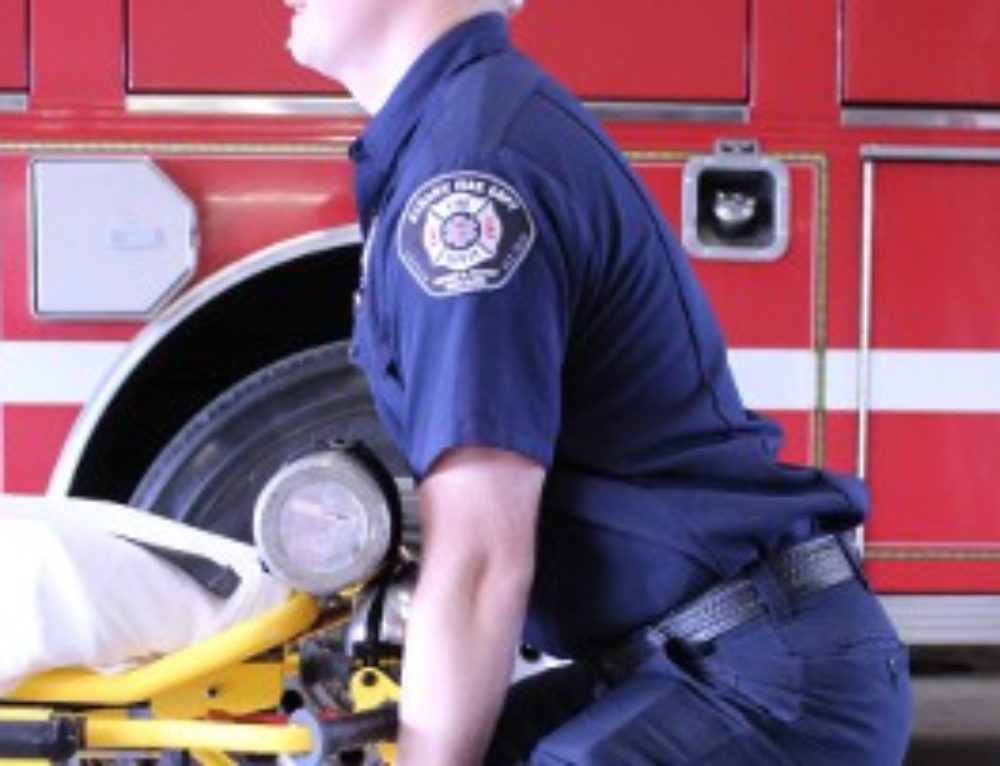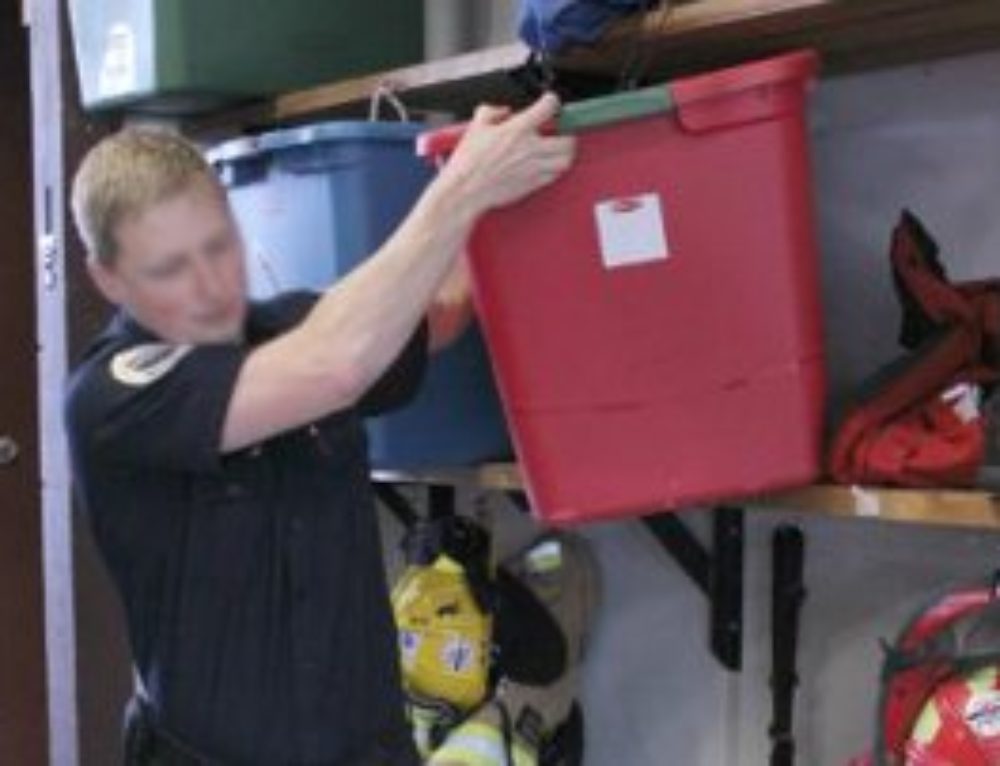Over the past few months I’ve been talking about back injuries in firefighters. First I cleared up a few myths about back injuries (see myths). Next we need to talk about exercises that firefighters should AVOID.
As I discussed last week, although firefighters clearly need to have a strong core, you should avoid exercises that involve extreme flexion of the spine (think of your low back bending into a “C” in the forward direction). Scientific research has shown us that this motion, while it may not hurt at the time, places a great deal of stress on the vertebrae. Over time, that stress builds up and the spine is no longer tolerant of high forces, which results in chronic pain and/or injury. So while exercises like sit-ups improve abdominal strength, they tend to decrease spine strength at the same time (because sit-ups promote spinal flexion).

Other exercises are harmful because they can result in such strong muscle contractions in the back, it actually damages the vertebrae that those muscles attach to. One example is the back extension machine pictured above. This exercise is often promoted as a good exercise to improve back strength/treat back pain when in fact it can weaken the spine and exacerbate back pain, especially over time.
The good news is that there’s almost always more than one way to work each muscle group in the body and there are plenty of exercises to strengthen the back that don’t simultaneously put unnecessary, damaging forces on the spine (and you have to deal with enough high forces on your spine in your work as a firefighter!) I’ll discuss those good exercises later. For now, I suggest you stop doing this exercise and, even better, share this information since so many firefighters are unknowingly increasing their risk of back injury by doing this.
Ps. Don’t believe me? Check out the comment from a firefighter below (4th one down).
Other exercises in this series:
If you’re not on my list to get more health tips like these, enter your name and email below.





Took 1 month off from working out due to life happening. With this time off my left hip flexor pain, right achillies pain and back pain all subsided. I felt great and was looking forward to working out. After 1 week of SLOWLY getting back into the groove and having my spotter check my form, my pains came rushing back. 2 handed kettle bell dead lifts and goblet squats were the only lifts that required more than body weight. Thoughts? Been thinking about not working out again due to this and just keeping it to low impact like spinning and swimming. I’m still walking 15-20 miles on the golf course a week and did so while I wasn’t working out for that month.
Hey Clifton, that’s actually more common than you would think (ceasing exercise and finding pain relief). It’s tricky because we usually need to be doing strengthening exercises to treat aches and pains but often what we do in our workouts is aggravating – the exercise in this blog post is a good example. I like your idea to keep it low impact for your cardio. It sounds like you’re also still fine to do all your exercises for the core and upper body, in addition to walking 15-20 miles and golfing regularly. I would experiment with lower body exercises, meaning: when you’re out of pain add in one single exercise and only do that for at least a few weeks. If it never gives you trouble, add in one more exercise and see if that’s aggravating. If it is – don’t do it. I would think that the extreme range of motion and high force production involved in kettle bell dead lifts and goblet squats might be the culprit for you.
Thanks. I’ll be keeping it low impact and see what this can do for me. I like the idea of adding things back in. Will give that a try when I’m feeling better. Thanks again.
Amen, to this… I learned the hard way–when I thought I was stengthening my lower back and wound up with an L-5 injury and excruciating sciatic and ITB issues. DO NOT DO THIS EXERCISE!!
Once my L-5 became inflammed I was unable to do any normal activities or recreatioal pursuits (which was the reason I thought I was doing this “back strenthening” exercise, to begin with). It’s premise of “back stengthening” is a toal misrepresentation, and you will actually expose yourself to injury.
My pain was so acute that I couldn’t walk more than 50 feet, climb stairs (forget a ladder), or even sit for maor than a few minutes–without having to stop and stretch, to try and release the spams and pain. According to my back specialist I had the quitessential L-5 sciatica that passed through the piriformus, down the ITB, spiraling around the outside of the calf (peronius longus muscle area) over the ankle (Tendon of tibialis anterior area) and ending on the bottom of my foot with numbness across the entire ball of my foot. (It felt like an electrified cable stretched taught).
After I was finally diagnosed, and received a 6-day course of prednisone to calm the inflammation, I could get physical therapy; which, over the course of several months (and with daily maintenance at home–for the rest of my life), has retunred me to almost normal. AGAIN, I IMPLORE YOU…DON’T DO THIS EXERCISE!!!
Thanks Bill for telling us your story…if that doesn’t convince people of the dangers of this exercise, I don’t know what will!
I completely disagree with the assertion that the back (hip) extension should be eliminated. Flexibility and extension of the hip independent of the spine (static) is how we should be performing most movements. Performing back (hip) extensions improperly or weighted is where the problem comes in. Limit range of motion to that which you are able to keep your spine neutral (normal s-shaped curve).
Also, limiting the exercises you choose for longevity on the job and in life should mimic those of the job. We have a high impact, heavy load bearing job and by not training with weights, you’re setting yourself up for injury (not to mention becoming a liability on the fireground). Movement selection should be varied, robust, and should include loads ranging from body weight to heavy weight.
Hi Matthew,
Did you happen to read Bill’s comment below?
I hear your reasoning but…at the end of the day there are just other, less problematic, ways to work you back muscles.
Karlie,
Yes I did read Bill‘s comment. I don’t know Bill or the circumstances for his injury, but I do know that learning to utilize hip flexion and extension independent of spinal flexion and extension is an important movement pattern that must be learned and practiced. I’m not saying that and range of motion from day one is the goal, but it is a movement that replicates many of the moments that we do our job.
One might argue that if the back extension should be illuminated, the same could be said for the good morning for the dead lift. Both replicate hip flexion extension independent of spinal flexion and extension. As you know, we are required to dead lift daily for our job, with loads many times greater than our body weight, unlike this body weight exercise.